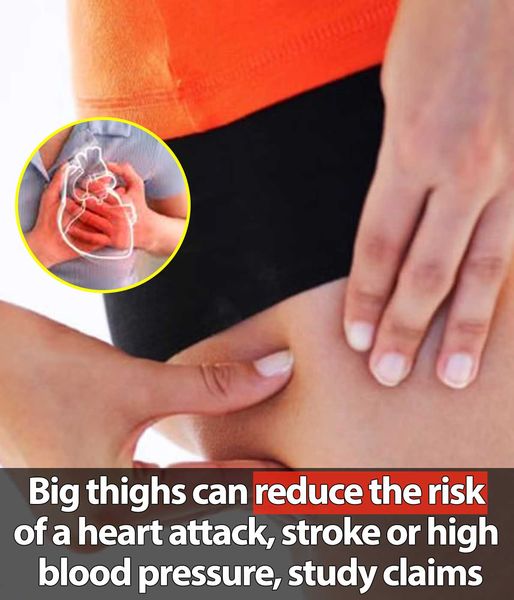Recent research highlights the unexpected health benefits of having larger thighs, specifically in relation to reducing the risk of stroke, heart attack, and high blood pressure. Here are seven key findings from various studies on the subject.
1. Larger Thighs Linked to Lower Blood Pressure

Research led by Dr. Zhen Yang from Shanghai Jiao Tong University found that overweight individuals with larger thighs had a nearly one-third lower likelihood of high blood pressure.1 This is significant as high blood pressure is a leading cause of heart attacks and strokes. Dr. Yang explains that thigh and hip fat are less harmful compared to stomach fat, which tends to accumulate around organs that regulate blood pressure.
2. Benefits of Pear-Shaped Bodies

The study suggests that being pear-shaped, with more fat stored in the thighs and hips rather than the waist, can have metabolic benefits. Fat stored in the legs might help stabilize blood pressure and improve overall metabolism.
3. Intramuscular Fat and Heart Failure Risk

A study from the University of Texas Southwestern Medical Center highlighted the risks associated with intramuscular fat in the thigh.2 This type of fat is linked to a higher risk of developing heart failure, independent of other risk factors like body mass index (BMI). The study followed 2,399 older adults and found a 34% increased risk of heart failure in those with the highest levels of intramuscular fat.
4. The Role of Ectopic Fat

Ectopic fat, or fat deposited in non-adipose tissues like skeletal muscle, is a known cardiovascular risk factor. The researchers found that higher levels of intramuscular fat in the thighs were significantly associated with a higher risk of heart failure. This suggests the need for new research to modify intramuscular fat levels to potentially reduce heart failure risk.
5. Potential New Treatment Avenues

Further research is needed to explore if reducing intramuscular fat or improving its quality can lower heart failure risk. Current findings suggest that dietary modifications, like increasing monounsaturated fatty acids, could help reduce intramuscular fat and associated risks.
6. Practical Applications of Thigh Circumference Measurements

The simplicity and cost-effectiveness of measuring thigh circumference make it a useful tool for early detection of high blood pressure. Dr. Yang’s study observed that men with a thigh circumference over 55 cm and women with over 54 cm had a lower prevalence of high blood pressure.3 This finding could help target interventions for overweight and obese individuals at risk of cardiovascular diseases.
7. Ongoing Research and Future Implications

Dr. Yang plans to continue investigating the relationship between thigh composition and blood pressure. This includes analyzing thigh fat, muscle, bone, and protein components to understand better how they contribute to the observed health benefits. Such insights could lead to new treatments and preventive measures for heart disease and stroke.
Conclusion

These findings collectively suggest that larger thighs might be more than just a physical characteristic; they could play a crucial role in reducing the risk of significant cardiovascular events. While more research is needed to understand the mechanisms fully, the current evidence supports the health benefits of thigh fat and muscle in mitigating heart disease and stroke risks.
